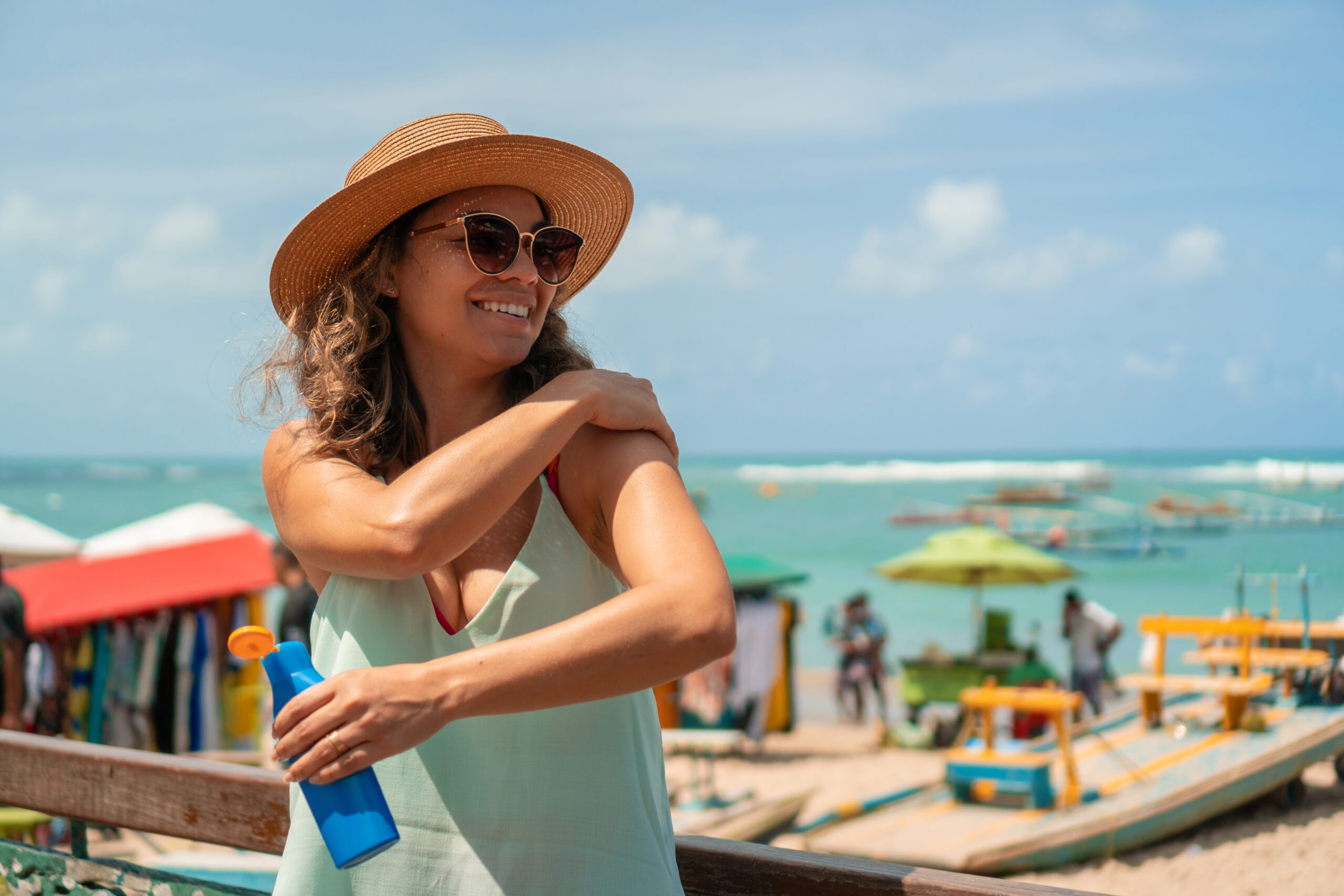July is UV Safety Month. As we head to the beach, cook-outs, and the pool – it’s important to know how to best protect your skin from the harmful effects of ultraviolet (UV) rays. So, what exactly is UV radiation and how can you make sure you’re protecting your skin this summer?
What is UV radiation?
UV are invisible rays that can be emitted naturally, through the sun, as well as artificially through tanning equipment. Excessive exposure of UV radiation can lead to short-term and long-term consequences. Short-term effects include redness, itching, peeling, and blisters; where long-term effects include premature wrinkling, skin ageing, and melanoma (the most dangerous and common form of skin cancer). There are three types of UV rays: UVA, UVB, and UVC.
- UVA: According to the World Health Organization, “Ultraviolet A rays (UVA) makes up around 95% of the UV radiation reaching the Earth’s surface.” UVA penetrates deep layers in the skin causing the tanning effect to take place, but it is also what contributes to early wrinkling and skin ageing.
- UVB: Ultraviolet B rays (UVB) can only penetrate the outer layers of our skin, which results in burning. These ultraviolet B rays can also amplify skin ageing and the development of skin cancer. Long-term exposure could lead to skin cancer or cataracts caused by prolonged effects from UVB rays.
- UVC: UVC radiation from the sun does not reach the earth’s surface because it is blocked by the ozone layer in the atmosphere – thus, exposure is normally from artificial sources like a lamp or laser, such as a tanning bed. While injuries caused by UVC rays aren’t typically as serious as UVA and UVB exposure, there is still a risk of damage to skin and eyes.
Five things you can do to protect your skin
Even though excessive exposure to UV rays can be harmful, there are ways to protect yourself while still enjoying your time outdoors with your friends and family.
- Always wear sunscreen. Use broad spectrum sunscreens with a SPF of 30 or higher and reapply every two hours. According to dermatologists, you should be using two tablespoons of sunscreen to the exposed areas of the face and body. A nickel-sized dollop to the face is normally your best bet.
- Limit your time in the sun. The sun’s rays are the harshest in the middle of the day between 10 a.m. and 4 p.m. Limiting time outside during the hottest parts of the day can help.
- Stay in the shade. Use umbrellas, screened porches, and staying shaded areas can help reduce exposure to UV rays and the overall risk of skin damage.
- Wear protective clothing. Sunglasses and hats offer good protection and reduce the possibility of eye damages. Dark color shirts and tightly woven fabric provide the most protection against UV rays.
- Avoid tanning beds and sun lamps. Tanning beds and even UV lamps used in nail salons can expose you to UVC rays. Remember to apply sunscreen to your hands and go for a sunless tanning lotion, which provides a golden glow without the danger.
Tips to help with sunburn
Excessive exposure to UV rays can be very painful if not handled properly, so if you do end up getting sunburned, here are some tips to help heal and soothe your skin.
- Use moisturizer that contains aloe vera or soy. These act as an anti-inflammatory and will help soothe the sunburned areas. If there is discomfort in a particular area, you might want to get hydrocortisone cream, which can be used to reduce redness and irritation.
- Stay hydrated! In order to heal itself, sunburns pull fluids to the skins surface and away from the rest of the body. To prevent the possibility of dehydration, drink a lot of water.
- Take cold showers. Sunburns cause a burning sensation on the affected areas. Cold water will provide temporary relief by decreasing excess blood flow to the skin, helping to reduce inflammation. To prevent drying out your skin, make sure to gently pat yourself dry instead of rubbing the towel against your sunburns.
Summer is the time of year where you want to relax and not have to worry about a thing. Stay protected and prevent a nasty sunburn this year by using these five tips against harmful UV rays. For more tips on staying healthy this summer and all year long, check out some other articles over on the Maxim blog!
References:
World Health Organization. (n.d.). Radiation: Ultraviolet (UV) radiation.
UV safety month. UV Safety Month. (n.d.).
How to treat Sunburn. American Academy of Dermatology. (n.d.).
How do I protect myself from ultraviolet (UV) rays? American Cancer Society. (n.d.).



